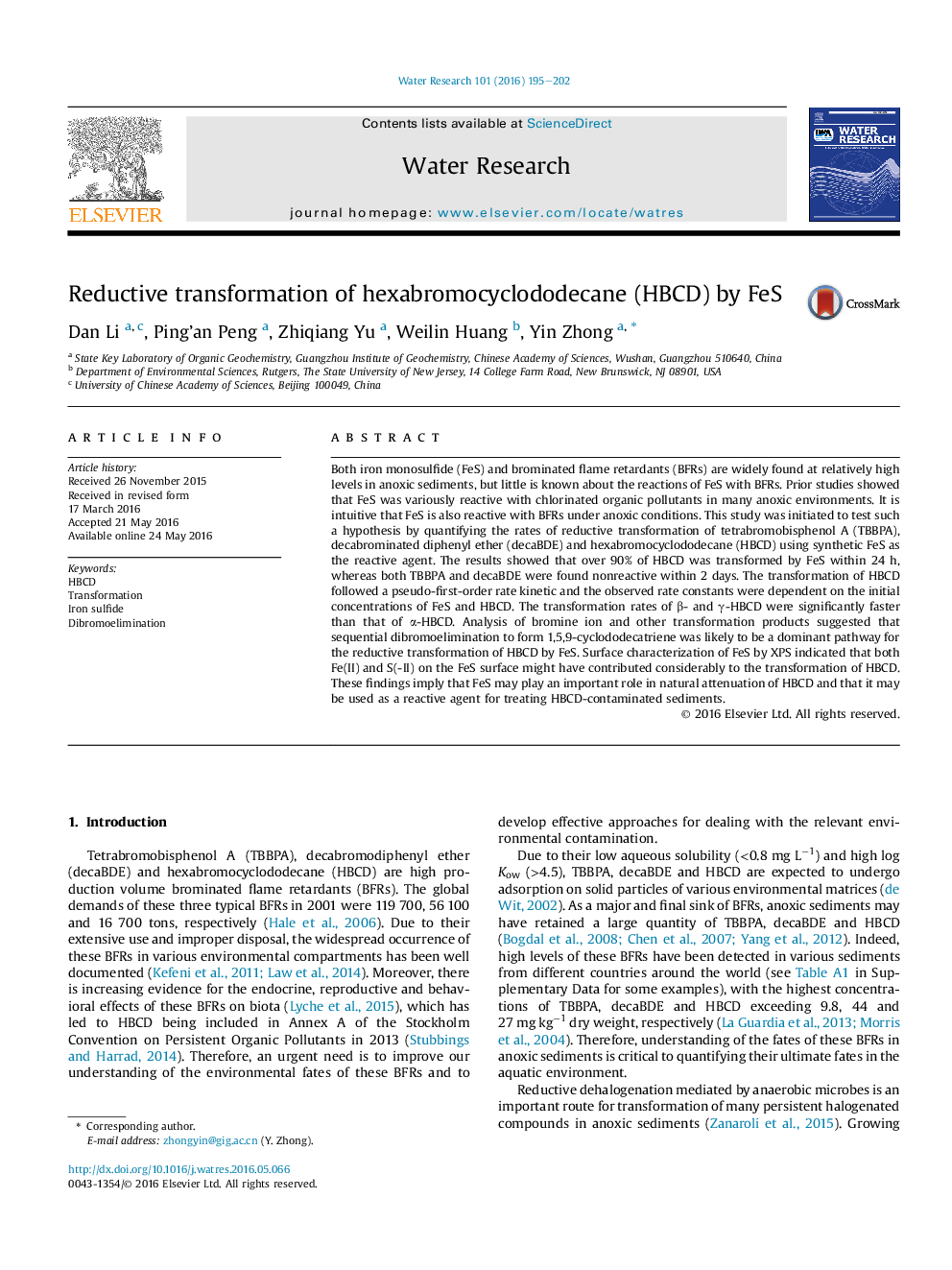| کد مقاله | کد نشریه | سال انتشار | مقاله انگلیسی | نسخه تمام متن |
|---|---|---|---|---|
| 6364831 | 1623067 | 2016 | 8 صفحه PDF | دانلود رایگان |

- Over 90% of HBCD could be reductively transformed by FeS within 24Â h.
- The transformation of HBCD by FeS followed a pseudo-first-order rate kinetic.
- HBCD was sequentially debrominated to form complete debromination product CDT.
- Both Fe(II) and S(-II) on FeS surface were involved in the debromination of HBCD.
Both iron monosulfide (FeS) and brominated flame retardants (BFRs) are widely found at relatively high levels in anoxic sediments, but little is known about the reactions of FeS with BFRs. Prior studies showed that FeS was variously reactive with chlorinated organic pollutants in many anoxic environments. It is intuitive that FeS is also reactive with BFRs under anoxic conditions. This study was initiated to test such a hypothesis by quantifying the rates of reductive transformation of tetrabromobisphenol A (TBBPA), decabrominated diphenyl ether (decaBDE) and hexabromocyclododecane (HBCD) using synthetic FeS as the reactive agent. The results showed that over 90% of HBCD was transformed by FeS within 24 h, whereas both TBBPA and decaBDE were found nonreactive within 2 days. The transformation of HBCD followed a pseudo-first-order rate kinetic and the observed rate constants were dependent on the initial concentrations of FeS and HBCD. The transformation rates of β- and γ-HBCD were significantly faster than that of α-HBCD. Analysis of bromine ion and other transformation products suggested that sequential dibromoelimination to form 1,5,9-cyclododecatriene was likely to be a dominant pathway for the reductive transformation of HBCD by FeS. Surface characterization of FeS by XPS indicated that both Fe(II) and S(-II) on the FeS surface might have contributed considerably to the transformation of HBCD. These findings imply that FeS may play an important role in natural attenuation of HBCD and that it may be used as a reactive agent for treating HBCD-contaminated sediments.
290
Journal: Water Research - Volume 101, 15 September 2016, Pages 195-202